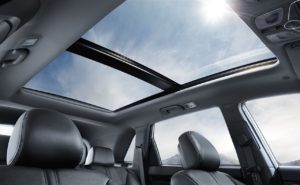Load securement basics- Keeping cargo safe in transit
Proper cargo securement is critical for truck drivers and motor carriers. When load shifting or spills occur, it poses substantial safety risks and financial liability.
- Shifted weight causing rollovers or jackknifing
- Unbalanced loads increase fishtailing risk
- Cargo falling onto roadways causing accidents
The Federal Motor Carrier Safety Administration (FMCSA) has strict regulations around load securement to protect against these dangers. Securing cargo properly minimizes harm if an accident or emergency stop occurs. It also prevents damage resulting in rejected deliveries and claims against the carrier.
Regulations and Responsibilities
The FMCSA’s cargo securement standards in Section 393.100-136 of the Federal Motor Carrier Safety Regulations (FMCSR) mandate:
- Deliveree cargo must be firmly immobilized or secured on or within a vehicle.
- Securement systems must withstand forces equal to 80% of the load’s weight shifting forward and 50% shifting sideways or backward.
- Specific rules exist for certain cargo types.
- Drivers must inspect load securement within the first 50 miles of a trip and every 3 hours or 150 miles thereafter.
- Carriers and drivers share responsibility for improper load securement violations which can result in fines or suspended operations.
Load Securement Principles
Three key principles form the basis of proper cargo securement:
Containment- Cargo must be prevented from leaking, spilling, blowing, or falling from the vehicle. Loads should be covered and enclosed when necessary.
Immobilization –Cargo must be restricted from moving horizontally, vertically, and laterally within the trailer through blocking, bracing, tie-downs, wedges, etc. Friction mats can help restrict small cargo movement.
Tiedown equipment- Tiedowns are a critical component of load securement. When selecting appropriate tiedown hardware, key factors include:
Strength – Tiedown assemblies must meet minimum working load limit standards. Chains, webbing straps, steel strapping, rope, and synthetic webbing are common materials used.
Protection – Straps and ropes can damage cargo if used directly. Edge protectors, friction mats, and other buffers should be used.
Type – Standard tie-downs, self-tensioning straps, chain systems, winches, synthetic webbing, and specialty products each have advantages depending on cargo and configuration.
Quantity – The number of tie-downs needed depends on the load’s weight distribution and dimensions. Use as many as required achieving effective immobilization.
Blocking and Bracing
Besides tie-downs, blocking and bracing prevent cargo shifting:
- Blocking – Lumber, beams, frames or barriers restrict movement in each direction. Friction helps contain loose items.
- It is bracing – Bars, plates, or wooden scuffs laid against items distribute weight and add lateral stability.
- Chocks/cribbing – Wedges immobilize round loads like pipes, drums, or coils.
- Dunnage – Lumber, airbags, or padding fills voids for maximum contact and friction.
- Drivers should carry an assortment of blocks, Posts, cribbing boards, and dunnage to handle diverse loads.
Maintaining securement equipment
Like other vehicle components, load securement equipment requires careful maintenance:
- Routinely lubricate and inspect winches, rails, hooks, chains, and other hardware. Replace worn parts.
- Frequently check straps and webbing for cuts, fraying, or damaged stitching and attachments.
- Confirm ratchet torque settings are correct.
- Keep an inventory of spare securement supplies to avoid shortages.
- Organize storage bins and boxes logically for efficiency.
- Remove dirt and grit from tie-downs to prevent abrasions and wear.
- Follow the manufacturer’s instructions for inspecting synthetic webbing and nets.
- Proper use, care, and replacement of securement equipment are essential.
- Safe cargo transport requires applying fundamental securement principles consistently. Effective load securement training paired with enforcing high standards provides a strong foundation for the future of motor carrier cargo safety.


